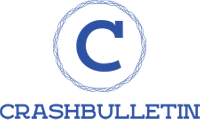Tennis Lunch: What To Have

Modern life can get extremely busy, especially if you are trying to fit sport into your everyday life. Indeed, often we can forget to organize any sort of lunch, even when we are due to train or participate in a tournament. Today, we are looking at how to easily prepare lunches that are tasty but do not compromise performance
In previous entries in this series on nutrition, we have followed the exploits of Daniel, who we are using as an example of a young person trying to fit both tennis and proper nutrition into their everyday lives. Daniel has already had a delicious and balanced breakfast, and is ready for lunch before his afternoon tennis training.
Just after school he has to consume a practical but tasty and nutritious meal. He has little time available to him, and so he has to choose his food based on the following characteristics:
1. Practicality.
2. Digestibility.
3. How fast his body will receive energy from the food he is eating.
The most appropriate lunch for Daniel includes foods with simple carbohydrates, such as semolina pasta (immediate release of sugars). This is preferable to complex carbohydrates, which are not as quickly assimilated by the body (these include rice and potatoes).
RELATED: 9 Foods To Help Promote Muscle Growth After Training
Next on the list are highly digestible proteins, to be consumed together with the simple carbs. Tuna is a great choice: a practical, tasty food that is rich in proteins and essential fats (omega 3 and omega 6). Parmesan cheese is also a good option, as it is energetically effective, rich in calcium and basic micronutrients. Aged Parmesan cheese is the only cheese recommended in this circumstance because it is lactose-free and therefore easily digested.
Alternatively, Daniel can opt for lean foods such as bresaola or turkey breast. Bresaola is a lean, cured meat, rich in proteins and essential amino acids. It is also rich in iron and Vitamin B.
Turkey breast is great option because it is low in fat and rich in iron, minerals, proteins and even sodium (salt). It is also rich in creatine, a compound useful in increasing the explosiveness of muscles.
On the other hand, raw or cooked ham is not ideal for lunch because they are too rich in sodium and would increase your thirst on the court.
Daniel, therefore, should combines 100 grams of pasta with about 150 grams of one of these proteins. He should also add 20ml of extra virgin olive oil, which is a source of Vitamin E and healthy fats that relieve fatigue.
It’s important to avoid normal pasta, as this can raise your blood-sugar levels to an unwanted level. Signs and symptoms that this has happened to you include loss of strength and concentration, lack of clarity and loss of muscle energy.
Daniel also knows that it is good to avoid, along with pasta, fresh dairy products and red meat, as they are difficult to digest of in such a short time frame. Eating these products causes the blood flows to the stomach to increase at a time when the stomach actually needs to oxygenate and contract easily.
There is no need to add vegetables or fruit to lunch. In this technical and effective lunch you need to eat only what is most useful for your training. Fiber does not offer energy and is often bothersome to the intestine and can compromise performance.
RELATED: 7 Foods To Avoid Before Training
Ready to give his best, Daniel starts to hydrate himself after lunch by drinking water at room temperature (cold drinks slow down digestion and do not quench thirst). He drinks in small, frequent sips. A professional takes care of every detail and knows that to prevent cramps he must avoid the excessive loss of salts.
Water, like all liquids, weighs on the stomach. Hydration is a slow process that works best in small doses.
Our friend Daniel can take snacks with him on the court, as long as they are not rich in sugars.
Remember, there is nothing better than playing a long rally and still feeling fresh!
from Tennis World USA https://ift.tt/2Fw1nkF

No comments